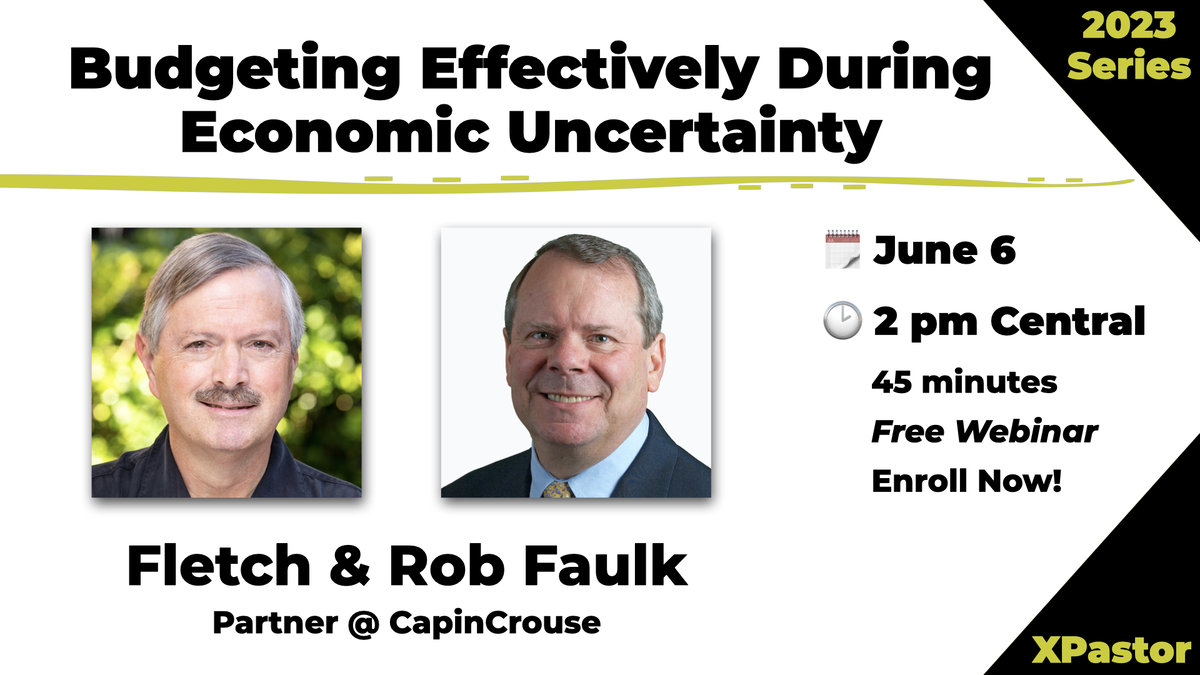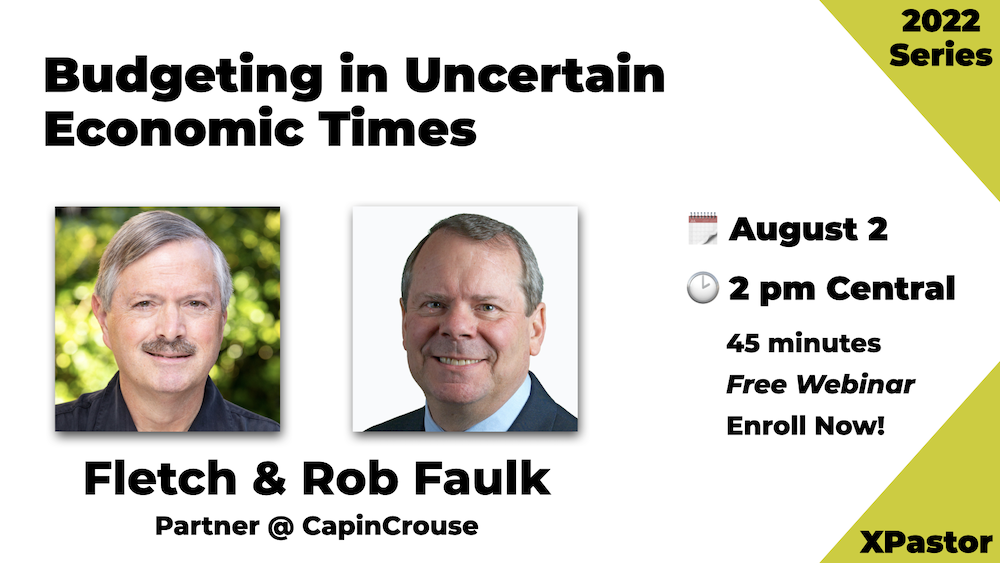Having been invited by David Fletcher to participate in a panel on the topic of the current economy’s impact on churches, I decided to pull together some up-to-date information from Executive Pastors around the country. The survey I sent out went to sixty XPs. 31 were kind enough to take the time to participate. While this is by no means a scientific sampling, the survey provides a great window into “real life in church leadership” during a tough economic time. The following is a snapshot of the information gleaned from these significant churches across America.
Responding churches demographic
Slightly more than half of responding churches are in the Southwest region of the country. 80% have been in existence for more than fifteen years. Almost half have current attendance between 1,000 and 2,000 while another 42% have attendance over 2,000.
Economic impact
With respect to first quarter giving in 2009, as compared to first quarter 2008, only 20% reported reduced giving, with none experiencing more than a 10% reduction. About 25% reported income at about the same rate while the rest have seen increased giving with 36% experiencing greater than 10% increase.
Attendance is up in 65% of these churches. Two-thirds of the churches with increased attendance reported the absence of any non-economic special circumstances that would have impacted attendance.
Staffing
74% of these churches have not had to lay off staff for economic reasons in the past twelve months. Of the 26% that did lay-offs, 38% reduced FTE’s by more than 10% with a 17% reduction being the most dramatic. Almost all of the surveyed churches did not expect to lay off additional staff in the second quarter of 2009.
Programmatic impact
Only 7% of responding churches said they had stopped ministries or programs for economic reasons in the previous six months. On the other hand, 68% said they had started new ministries or programs in direct response to opportunities created by current economic issues. An additional 30% of these churches plan to start economy-related ministries in the next twelve months.
Contingency plans
81% of the respondents said their churches have developed specific contingency plans in case the economy worsens. These plans range from across the board ministry funding cutbacks to clearly defined phased actions triggered by giving trends. Many expressed significant effort to save money now so that cash reserves can be built.
Observations and implications
The churches in this survey are predominantly established, innovative churches that have a history of growth. As observed in the recent economic study by Leadership Network:
If churches were growing, they continue to grow; if holding steady, they continue to hold; if declining, they continue to decline (see “How the Economic Slump is (or isn’t) Hitting Churches” at www.leadnet.org).
This seems to hold true in our study as well. Only certain regions of the country that have been particularly hard hit (such as automobile industry states where there are high job loss rates and “sand” states where property values and retiree fixed income levels have dropped dramatically) have proven differently.
The adage that “people give to vision” seems to be borne out by the degree to which many of these churches have increased their practical needs-meeting ministries. In fact, it looks like people will give sacrificially to help meet practical needs of hurting people while continuing to support the operating needs of the church.
Churches have responded quickly to the significant needs that have emerged in the lives of the people within their own congregations. The responses have been practical and are meeting real needs. Based on the needs experienced locally, churches are providing things like rent assistance, food pantries, job retraining, interview skills training, and targeted help for single mothers and widows.
Some, but not all churches have recognized the opportunity to take the lead in their communities to meet the needs of hurting people community-wide and have moved quickly to set the pace for providing services to the needy. These churches have been particularly aware of the needs in their communities and have provided proactive leadership to provide job fairs, job training, networking contexts, food services and the like for people beyond their own congregations. In some cases, these churches found ways to distribute financial help to the most needy in the community.
The theme of moving forward to meet needs innovatively is balanced fairly consistently with a pragmatic planning effort to respond wisely and frugally to unexpected changes in giving trends. The desire to minimize, if possible, additional staff losses is almost universal. The reported contingency plans range all the way from basic spending reduction plans to very elaborate, phased plans with specific giving trend trip points for each phase.
View survey questions and results in original PDF: Economic Survey Results







